In the aftermath of World War II, there was a significant amount of effort put into deciding what rifles would be used by the post-war Allied armies. The UK and US wanted commonality, but couldn’t agree on a rifle design. The main contenders were the American M14 (and its experimental predecessors), the British EM-2, and the early Belgian FAL rifles. As with most development projects, there were a lot of designs that were experimented with and didn’t make the final cut. We happened across a small batch of cool photos of these sorts of guns from this period in the late 40s and early 50s. My favorite is this one – I thing the lines of the CQB EM-2 are pretty nice:
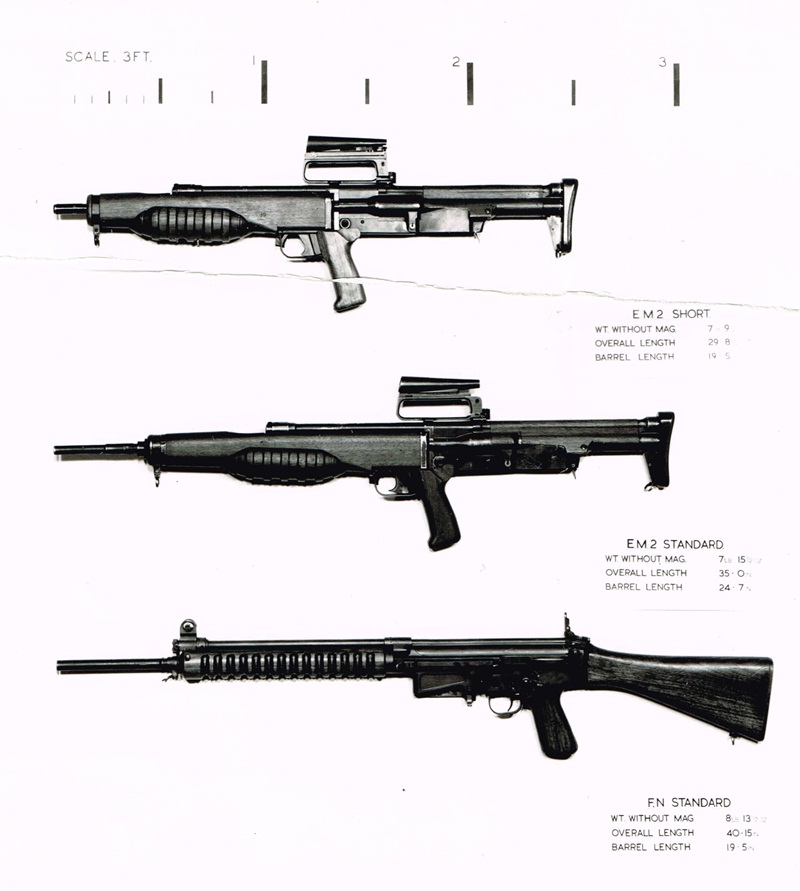
That’s just awfully cute, isn’t it? I bet in .280 it would be reasonably controllable, though.
Is huge contrast, the ugliest rifle of the bunch is a close match between the US T25 and T28 rifles:
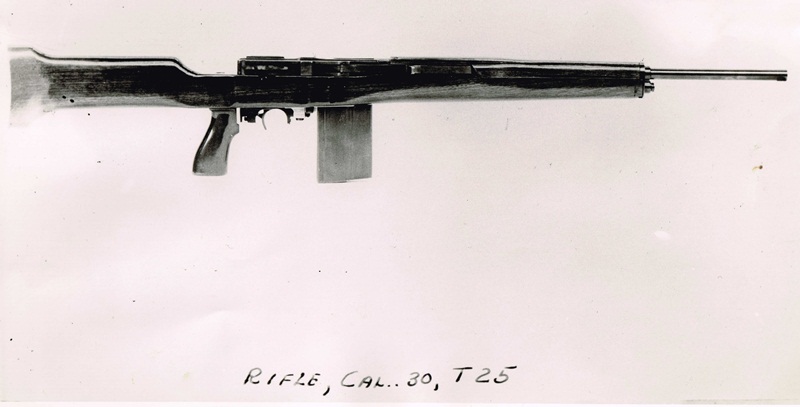
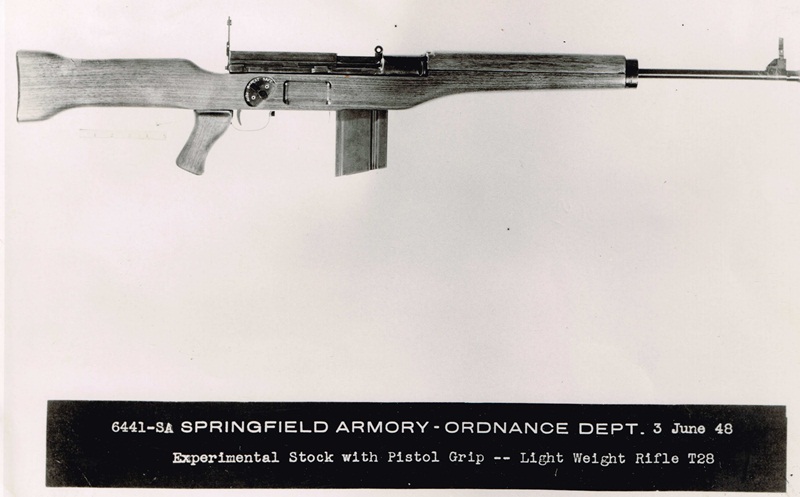
They both look like the tragic offspring of a Ljungman and a SIG AMT.
The EM1 and EM2 rifles were both referred to by snake-based code names – the EM1 “Cobra” and EM2 “Mamba”:
Lastly, to round things out we have the early FAL. Both the “standard” and the bullpup “carbine” model:
You can download a zip archive of all these photos at much higher resolution here: 1950s Light Rifle Prototypes





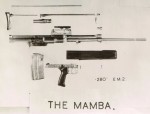







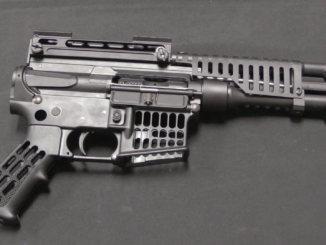
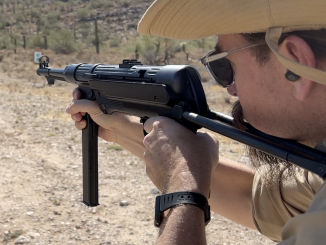
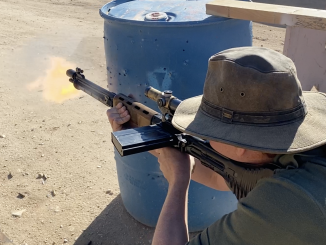
Wow the bullpup FAL is badass !
The original American favorite was the Earl Harvey T25 rifle, which works very differently than an M14 (though I believe the M14 inherited its gas system).
The T25 looked to be a winner, but there were some developmental difficulties. Though nothing seemingly insurmountable, the somewhat mercurial nature of American military research and development in the era killed the program after only a few years.
The T44, which would become the M14, was the culmination of a relatively ad-hoc firearms design program to try to find a replacement for the T25.
The T25 was designed to be manufactured by distributed fabricators, small factories across the country that would be difficult to knock out in the event of a nuclear exchange. To that end, the parts are simple shapes, easily machined. Those parts that cannot be easily machined, are cast. The rifle has a tilting locking surface, which locked against the ejection port of the rifle, much like a Browning-style pistol’s barrel.
The later T47 rifle worked like a T25, but was conventionally stocked (and much better looking).
polymer stock, picatinny rails and a SUSAT and the EM-2 would still be top notch.
The EM-2 had an odd aspect of its design where, upon firing, the bolt and locking flaps were driven back, causing the flaps to slam into the locking recesses with great force before locking the weapon.
I don’t know what this was intended to accomplish, and I don’t know if or when it was eliminated, but the result was that the EM-2 had shockingly poor time in headspace. The rifle’s headspace would grow by about five thousandths of an inch over the course of a paltry 6,000 rounds. In the same trials, the American T25’s headspace did not grow measurably over that same number, and the FN FAL prototype in .280 (a rifle that would later be known for having headspace issues later in its life) experienced only about a half thousandth of an inch growth in headspace in the same test.
For reference, a rifle that has headspace .015″ greater than the GO gauge is considered to be out of headspace. I can only assume the EM-2 would reach this number before 20,000 rounds.
Seeing that early FAL again just makes me want to borrow the Doctor’s callbox long enough to go slap some sense into those yahoos at Ordinance about both the rifle & the .280 cartridge.
The history of US Ordinance since the end of WWII has been probably the worst of any army in the world.
I think a combination of the M14, the early AR15 and Berettas with brittle slides, is easily trumped by the SA80, in a game of bad gun choices.
I’ve never fired a G3, but gather that it’s pretty rancid to.
I’ve used both the G3 and FNC,in my military service.
And sure a 5.56 like the FNC is easier to shoot well with and very easy to control in full auto. Compared to the G3 there is no recoil. 🙂
But still I’ve always liked the G3 and wouldn’t call it rancid.
It shoots well and is reliable and have much better stopping power.
anyway…..
Nice pictures
Props on the DW reference. You would enjoy the beautiful T-65 in the Smithsonian Museum of American History collection. Minty – Minty. That it was so quickly dismissed is tragic.
The T28 was a modified and rebarreled experimental German late-war rifle known as the gerat 03 or 07
I still wish the EM2 had been adopted. I wonder how it would have changed things? It certainly must have looked very futuristic at the time.
The FN FAL Bullpup in .270 or .280 British would still be in use as standard today. Hard to improve on. William Barnett-Lewis said it all really.
The SA80 was hastily cobbled together to fulfill a contract that made the sale of the Royal ordinance factories viable. It turned into a nightmare of incompetence, and what is now BAE finished the order and promptly closed the production line. The aceptence tests must have been corrupted because nearly all the working parts were later replaced , after years of the government insisting there was nothing wrong with the weapon.
The project to produce a cheap stamped AR18 knock off, ended up costing a small fortune per unit. Plus 90 million on top to get Heckler and Koch to salvage a workable weapon from the mess.